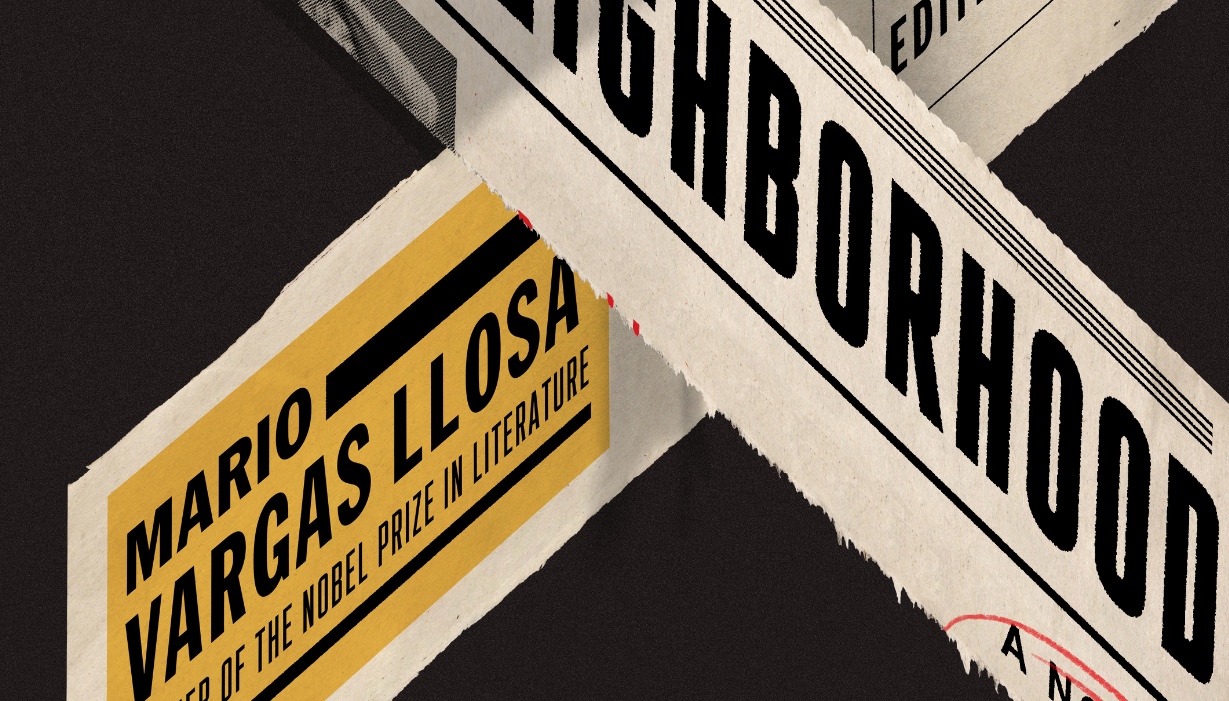The Neighborhood

Norman Mailer, James Michener, Upton Sinclair, and Gore Vidal were long shots in the political campaigns each novelist ended up losing. But, in 1990, Mario Vargas Llosa came very close to being elected president of Peru. He led in the first round of voting but was defeated in the runoff by an obscure engineer named Alberto Fujimori. Until he fled the country ten years later, President Fujimori waged a brutal war against the Shining Path and Tupac Amaru terrorist groups and against the norms of a free society. When he tried to return to Peru, he was convicted of embezzlement, bribery, kidnapping, and murder and sentenced to 25 years in prison.
The book is set in part in the seedy and dangerous Five Corners neighborhood of the Peruvian capital. It begins, however, elsewhere in the city, in the posh apartment that Enrique Cárdenas, a mining executive, shares with his beautiful wife Marisa. An urban political thriller, the novel assembles characters from very different social strata. Squatting at the five corners of the squalid Fujimori era are: 1) Enrique and Marisa, along with their equally gilded best friends Luciano and Chabela Casabellas; 2) Rolando Garro, the odious editor of a sleazy tabloid called Exposed; 3) Juan Peineta, a feeble old pauper who was a TV celebrity until Garro’s paper destroyed his career; 4) Julieta Leguizamón, aka Shorty, Garro’s protégée, his star investigative reporter; and 5) Vladimiro Montesinos, aka “the Doctor,” the notorious head of Fujimori’s intelligence service and the only character in the novel based on a historical figure. (Convicted of multiple heinous crimes, the real Doctor is currently serving a long prison sentence. He has not – yet — received a pardon.)
The plot is set in motion when Garro visits Enrique’s office with a sheaf of photographs and a suggestion. The photographs are, no surprise, compromising: the tycoon is captured participating in an orgy he had been lured into two years before. The suggestion is that, without an exchange of cash, the photos might end up in the pages of Exposed. Enrique refuses to submit, a scandal erupts, and a murder follows.
The characters that Vargas Llosa conjures up to propel a plot through malicious gossip are either repulsive, obnoxious, or pathetic. At first, the two rich couples, victims more than victimizers, seem more sympathetic than the wretched journalists and certainly than the nefarious Doctor. However, their hypocrisy and insensitivity soon become apparent. Enjoying multiple homes in Peru and Miami and polymorphous, adulterous sex, they appear oblivious to the crude exercise of power on which their comfortable lives depend. “If it hadn’t been for terrorism and kidnappings, in reality one lived very well in Lima,” according to Chabela, who is cast as a South American Marie Antoinette.
In the novel’s final pages, set during the presidency of Alejandro Toledo, which lasted from 2001-2006, Fujimori and the Doctor are both in prison, though in reality Fujimori was not extradited to Peru until 2007. Vargas Llosa also orchestrates the downfall of the dictatorship in a way that does not conform to how history actually unfolded. It is possible to imagine the octogenarian author savoring details of the Lima that he left and reveling in the opportunity to bring Alberto Fujimori, his nemesis, to justice on Vargas Llosa’s own terms. Before the pardon.
At 79, Vargas Llosa’s own age in 2016, Juan Peineta is losing his memory, but, “resisting the avalanche of time,” he fondly reviews his career as a professional reciter of canonical poetry. It pains him to recall how he agreed to join a vulgar comic act that made a mockery of his lofty art. The Neighborhood is an audacious descent into the mean streets of Lima, and employs Vargas Llosa’s trademark interlacing dialogue – a montage of separate conversations. But it is an indelicate literary stunt that lacks the operatic eloquence of Conversation in the Cathedral, The War of the End of the World, and The Feast of the Goat – when Vargas Llosa made his pages sing.